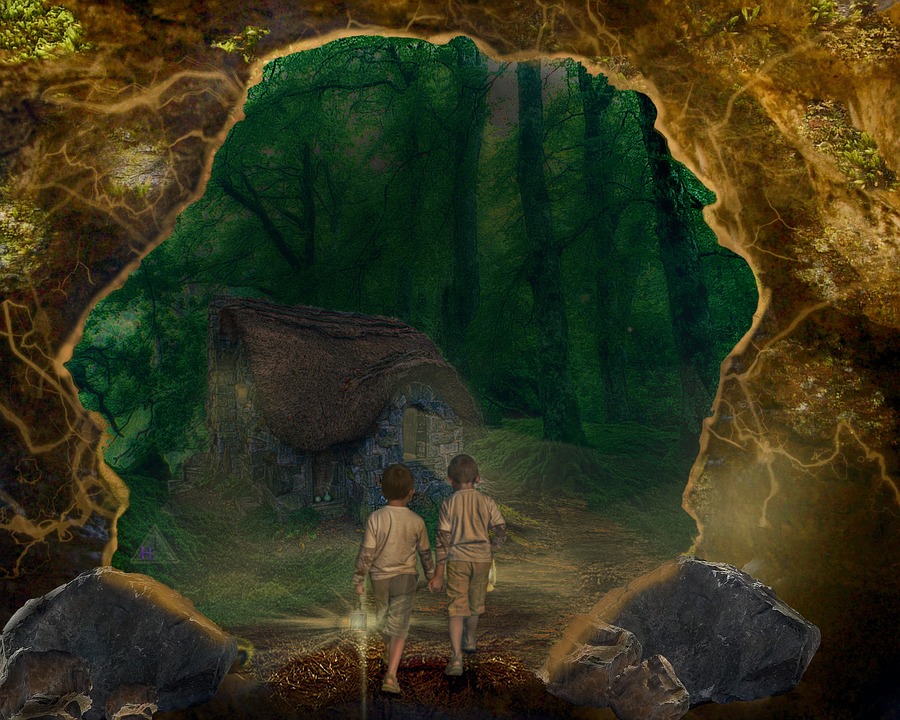
C.S. Lewis, Fantasy Tales, and How to Say Best What’s to be Said
Jessica Mau
C.S. Lewis explains in his essay “Sometimes Fairy Stories May Say What’s Best to be Said” how writing a story starts and why he chose to write fairy tales, especially in the case of The Lion, the Witch, and the Wardrobe. According to Lewis, “there are usually two reasons for writing an imaginative work,” which he explains by splitting the consciousness of the writer into two distinct personas—the Author and the Man.
The Author is the creative side of the writer, and in some ways he can be compared to an eager and impatient child when it comes to wanting to write his work. C.S. Lewis compares the Author to being in love with someone—the ideas distract the Author from his work, keeps him from sleeping, and takes his time from his meals.
In the Author’s mind there bubbles up every now and then the material for a story. For me it invariably begins with mental pictures. The ferment leads to nothing unless it is accompanied with the longing for a Form: verse or prose, short story, novel, play or what not. When these two things click you have the Author’s impulse complete. It is now a thing inside him pawing to get out. He longs to see that bubbling stuff pouring into that Form…(35)
The Man, on the other hand, is the more critical and practical part of the writer who asks such questions as, Will the time taken to write this piece of work be beneficial, or is it wiser to spend the time elsewhere? Is this idea worth the time and effort, or will it be too frivolous and go nowhere? It is when the Man says the idea looks good that the writer can choose a form and begin writing.
C.S. Lewis goes on to tell why he chose to use the form of a fairy tale for The Lion, the Witch, and the Wardrobe. Instead of having an elaborate plan laid out for how he would show Christianity through an allegory to children, the story first came to him as a series of pictures. Eventually when these pictures organized themselves and became events, they took on the form of a fairy tale. The story at first had nothing to do with Christianity; instead, it managed to worm its way in naturally.
I find it interesting and relatable to myself how C.S. Lewis explains the creative process. In “It All Began with a Picture,” he says for him it began with a simple image.
One thing I am sure of. All my seven Narnian books, and my three science fiction books, began with seeing pictures in my head. At first they were not a story, just pictures. The Lion [, the Witch, and the Wardrobe] all began with a picture of a Faun carrying an umbrella and parcels in a snowy wood. This picture had been in my mind since I was about sixteen. Then one day, when I was about forty, I said to myself: ‘Let’s try to make a story out of it.’ (42)
I find that true for myself—maybe not a picture, per say, but a silly or small idea that I might chuckle at when I think of it. Then I begin to think on it more and more, maybe apply it here or there, start shaping short clips of what might happen in my mind, and suddenly a small idea has become something big and different. When I try to think where it started, however, the original thought which started it all is nowhere to be found in my memory.
Although I never realized it until I read Lewis’s essay, the Author and the Man distinction apply to me as well. I may have thousands of ideas flying around, but I only have a fraction of the time needed to think on and develop them. An even smaller portion actually manages to make it to paper. While the Author part of me is excited about all of these ideas and wants to create using them, the Man part analyzes and criticizes them, leading many ideas to their death. It is when that part of me looks at an idea at every side, hammers out a few parts of it, and finally says that it is good enough that I can actually start writing the story.
(1). Lewis, C.S. Of Other Worlds: Essays and Stories. Ed. Walter Hooper. New York: Harvest Book, Harcourt, Inc. 1994.